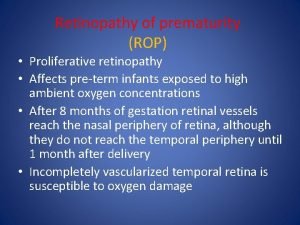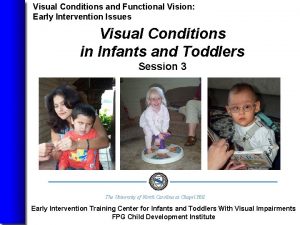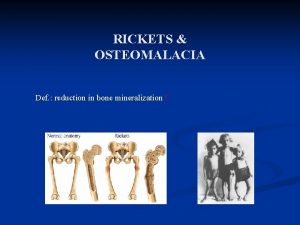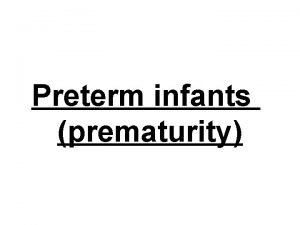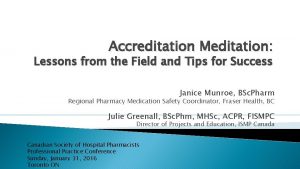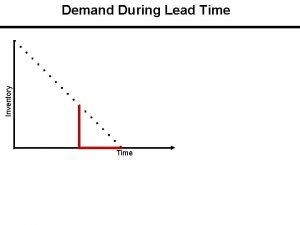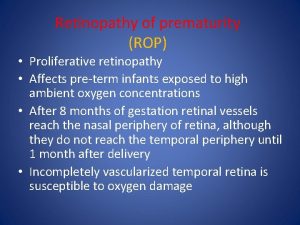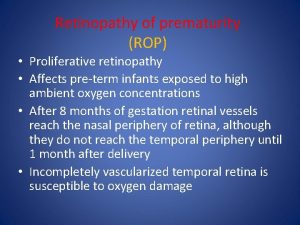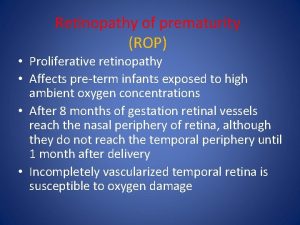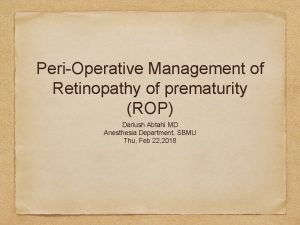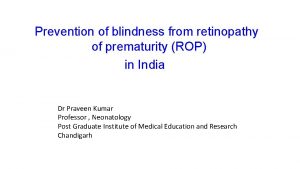Retinopathy of Prematurity Retinopathy of Prematurity l ROP








- Slides: 8

Retinopathy of Prematurity

Retinopathy of Prematurity l ROP is a disease of disorganized vascular development in the immature retina which in the worst case leads to retinal detachment and blindness l Risk factors include prematurity and low birth weight (<1500 grams)

Etiology of ROP l Supplemental O 2 has been implicated in the development of ROP l Animal studies have further supported the belief that high saturations early in an infants development lead to the later development of retinopathy

Etiology of ROP (cont) l In utero, the fetus has a PO 2 of 22 -24 mm Hg l Following premature delivery, PO 2 levels are substantially higher than this l This hyperoxia may decrease the production of vascular growth factors arresting vascular development

Etiology of ROP (cont) l As the eye develops, metabolic demands increase, requiring increased blood flow l In an eye exposed to hyperoxia, the retina becomes hypoxic from lack of vascularity l This retinal hypoxia may lead to pathologic vascular development of the immature retina

ROP l These abnormal vessels may lead to fibrosis of the retina, or as the vessels proliferate, may result in retinal detachment l To avoid this detachment and potential blindness infants undergo laser photocoagulation

Not Just ROP l Previous studies which evaluated whether higher saturations later in the course of ROP could be beneficial, showed no significant impact on ROP, however… – Higher O 2 sats lead to a higher incidence of pneumonia and CLD

Our Goal… l To limit oxygen exposure in infants < 1500 grams by: – Targeting saturations of 89 -94% – Setting alarm limits at 85 -95% l O 2 limits can be increased to 100% if infant in room air – Protocolizing approach to desaturations
